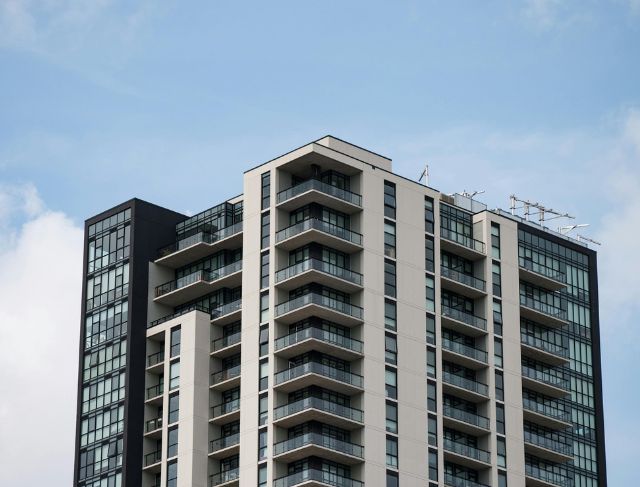The amount of your income you allocate to rent determines the course of your entire financial future. The irony is this not even the tip of the iceberg, but it deserves to be called out right here at the beginning because so many renters only look at the monthly price tag on Zillow and ignore the longer-term consequences of that number on their ability to fund emergency reserves, their net worth growth trajectory, and even their ability to buy dinner next week.
Income Increases but Rent Percentage Should Decrease
Some people imagine that if they ever made $100,000 per month, spending $20,000 or $30,000 on rent becomes normal, because of the 30% rule. But to help clarify the point here, please insert the SEO term high-income rent affordability guideline: the higher the income, the lower the percentage of income that should be spent on rent. Realistically, under extreme high-income brackets, 10% makes much more sense! Normally we think spending 30% at $100K monthly is fine, but spending 30% is basically lighting money on fire, unless you literally want to be rent-rich and cash-poor at the same time.
How the 30% Rule Became the Accidental Modern Myth of the 1980s
The original heuristic was never intended to be a universal law. The idea was that 1980s U.S. policy analysis found households that spent over 30% of their gross income on rent struggled to pay their other bills. The modern economy, with remote work evictions and fluctuating rent charges that outstrip income increases, has muddied that equation somewhat. Nevertheless, establishing rent that is 20-30% of gross monthly income remains a starting point and is the easiest way to calculculate income gross to make a rental budget someone can they could be overloaded by the thought of having to spend too much of their income.
Perhaps a Fast Dive into Joe’s Life: A Real-Life Rental Outside of the Box That Doesn’t Make Sense but Makes Sense
Joe’s gross monthly income is around $4,000. Before rent, he pays $300 for his car, $200 for student loans, $100 for utilities, and about $300 for the rest of the miscellaneous life chaos. He has already spent $900. At 22.5% of his gross income, he has not opened Zillow yet. The realistic maximum he could charge for rent, if he wanted room for savings and anything resembling having a safety net, is about another ~$900. That would put him at a total of $900 expenses at 45%, which is the safety limit for how much life feels sustainable months after month without literally needing to “survive.” If you spend over 45% in housing, you might as well give up on investing altogether into anything.
The Weird Truth About Rent Prices Changing Completely Within 20 Miles
Costa Mesa, California, has tiny 500-square-foot studios for around $2,200 to live in. If you get closer to Newport Beach, both normal people and price-douchebags disappear entirely as the price multiplies into $5,000 – $15,000. Then you blink come the state of St. Louis, Missouri, where $807 a month gets you a full 750-square-foot apartment. That is what I call rent price comparison between cities being practical advice rather than the same paycheck creates two opposite lifestyles that are dependent on merely where you choose to plant yourself.
Alexandra’s Upper Midwest Advantage: A Random Leap into a Completely Different Space
Let’s imagine Alexandra is earning $60,000 dollars a year, or $5,000 dollars a month. In the Midwest, she finds an easy two-bedroom apartment at $1,000 dollars a month. She’s winning the rent situation, and has money to spare for saving, investing, traveling, or just breathing. Put her in San Francisco, or New York City and suddenly a tiny studio apartment is $3,000 dollars a month. Now, she’s not house-rich because rent is not building any equity for her. Instead, she is rent-rich, which is a poetic way of saying financially trapped.
Why the Type of Job You Choose Carefully Considers Your Rent Situation
Remote work flips the whole system upside down. The best remote job to lower someone’s rent cost illustrates a valuable strategy people do not think about there: earn San-Francisco-level income but live in a St-Louis-level city. The location arbitrage hack for the poverty bleeder is simple, yet game-changing. Even the online business owner can pull all their living expenses to Bali-levels of expenses while earning U.S. income. Suddenly, $2,000 dollars per month living expenses are feeling luxurious instead of skimpy.
Roommates: The Financial Superpower Most People Don’t Want but Everyone Needs
We have to include a reality that changes how affordable renters can live in a rental property more than any filter you can find on Zillow. Generally speaking, renting a two-bedroom apartment is much cheaper than renting a one-bedroom apartment alone since rent doesn’t scale by room, but rather scales for the apartment. This is the exact place where my long-tail keyword lower rent costs by sharing housing is given real-world application. Young adults living with intentional, goal-oriented roommates save significantly more with the additional potential to pay down debt or save 3x more than any regular living situation.
Why the Amount You Rent Will Determine Your Whole Financial Future
The rent you pay determines the number of options, flexibility, freedom, and ease of mind you will experience. There are many things you can choose to afford, but there are fewer things that you can truly afford—intentionally. Keep rent at or below 20–30% of your gross income—lower for higher incomes—and your entire financial life eases. Just don’t look at the numbers—then the rest gets harder—even if a nicer-looking apartment.
Whether you’re scrolling Zillow at midnight or planning a huge life change, the most important rule is to treat your rent like a financial decision first—not just a monthly bill. Rent decisively, rent intentionally, and rent based on who you want to be in a year financially.






